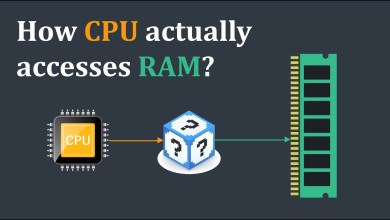An Introduction to Cloud Computing
link :
In today’s digital age, where data and technology reign supreme, cloud computing has emerged as a transformative force. This article will take you on a journey through the world of cloud computing, exploring its fundamental concepts, benefits, and real-world applications. We’ll break down the complexities and make cloud computing accessible to all, whether you’re an IT professional or just curious about this game-changing technology.
.
What Is Cloud Computing?
Cloud computing is a technology that allows individuals and organizations to access and use a shared pool of computing resources (such as servers, storage, databases, networking, software, and more) over the internet. Instead of owning and managing physical hardware, users can simply rent or lease these resources on a pay-as-you-go basis. This model provides the flexibility to scale resources up or down as needed.
The Evolution of Cloud Computing
The concept of cloud computing has evolved over the decades. From the early days of mainframe computers to the advent of virtualization and the internet, cloud computing has a rich history. The modern cloud era truly took off with the introduction of services like Amazon Web Services (AWS) and the development of virtualization technologies.
Cloud Service Models
Cloud computing offers various service models to cater to different needs.
Infrastructure as a Service (IaaS)
IaaS provides users with virtualized computing resources over the internet. This includes virtual machines, storage, and networking. Users have full control over the operating system and applications while the cloud provider manages the underlying infrastructure.
Platform as a Service (PaaS)
PaaS offers a platform that includes not only the infrastructure but also development tools and services. It’s an excellent choice for developers who want to focus solely on building and deploying applications without worrying about the underlying infrastructure.
Software as a Service (SaaS)
SaaS delivers software applications via the internet on a subscription basis. Users can access these applications from any device with an internet connection. Examples include email services like Gmail and productivity suites like Microsoft 365.
Deployment Models
Cloud computing also offers various deployment models to suit different scenarios.
Public Cloud
Public clouds are owned and operated by cloud service providers and offer resources to the general public. They are scalable, cost-effective, and suitable for a wide range of applications.
Private Cloud
Private clouds are dedicated to a single organization. They provide greater control, security, and customization but may require higher upfront costs.
Hybrid Cloud
Hybrid clouds combine both public and private cloud resources. This approach allows organizations to maintain sensitive data on a private cloud while leveraging the scalability of a public cloud for other tasks.
Advantages of Cloud Computing
Cloud computing offers several compelling advantages.
Scalability and Flexibility
One of the most significant benefits of the cloud is its scalability. Users can easily scale resources up or down based on demand, ensuring optimal performance and cost-efficiency.
Cost-Efficiency
Cloud computing eliminates the need for significant upfront hardware investments. Users only pay for the resources they use, making it a cost-effective solution for businesses of all sizes.
High Availability
Cloud providers maintain multiple data centers, ensuring high availability and redundancy. This minimizes downtime and data loss, crucial for business continuity.
Collaboration and Accessibility
Cloud-based applications facilitate real-time collaboration among users, regardless of their geographical locations. Data and applications are accessible from anywhere with an internet connection.
Key Players in Cloud Services
Several major players dominate the cloud services landscape.
Amazon Web Services (AWS)
AWS is a leading cloud services provider, offering a vast array of services, including computing, storage, machine learning, and more. It serves millions of customers worldwide.
Microsoft Azure
Microsoft’s Azure platform provides a comprehensive suite of cloud services, including virtual machines, AI, and IoT solutions. It is known for its integration with Microsoft’s other products.
Google Cloud Platform (GCP)
GCP offers a wide range of cloud services, with a strong focus on data analytics, machine learning, and container orchestration. It is known for its data and AI capabilities.
Security and Privacy Considerations
While cloud computing offers numerous advantages, security and privacy are critical concerns.
Data Encryption
Data encryption is essential to protect sensitive information in the cloud. Both data at rest and data in transit should be encrypted to safeguard against unauthorized access.
[ad_2]
source



